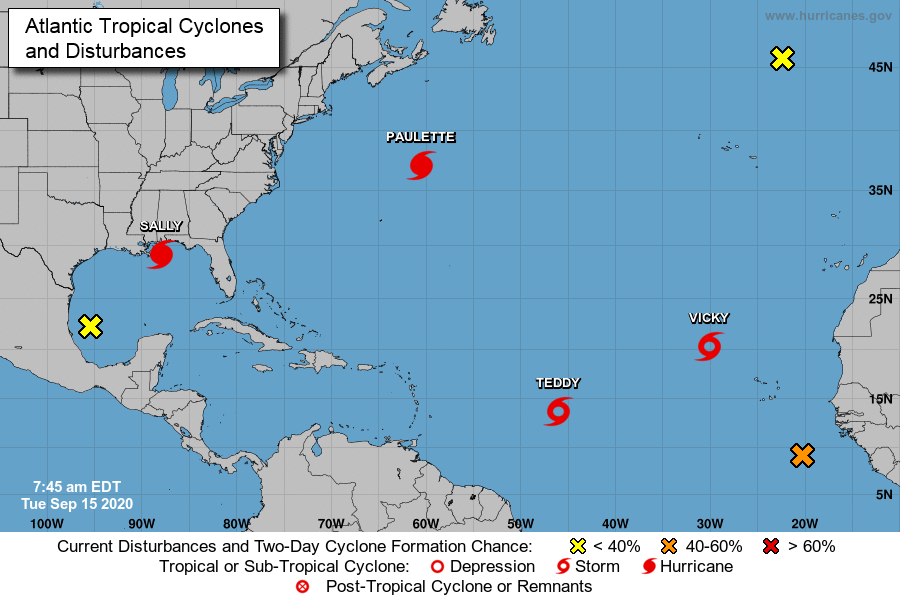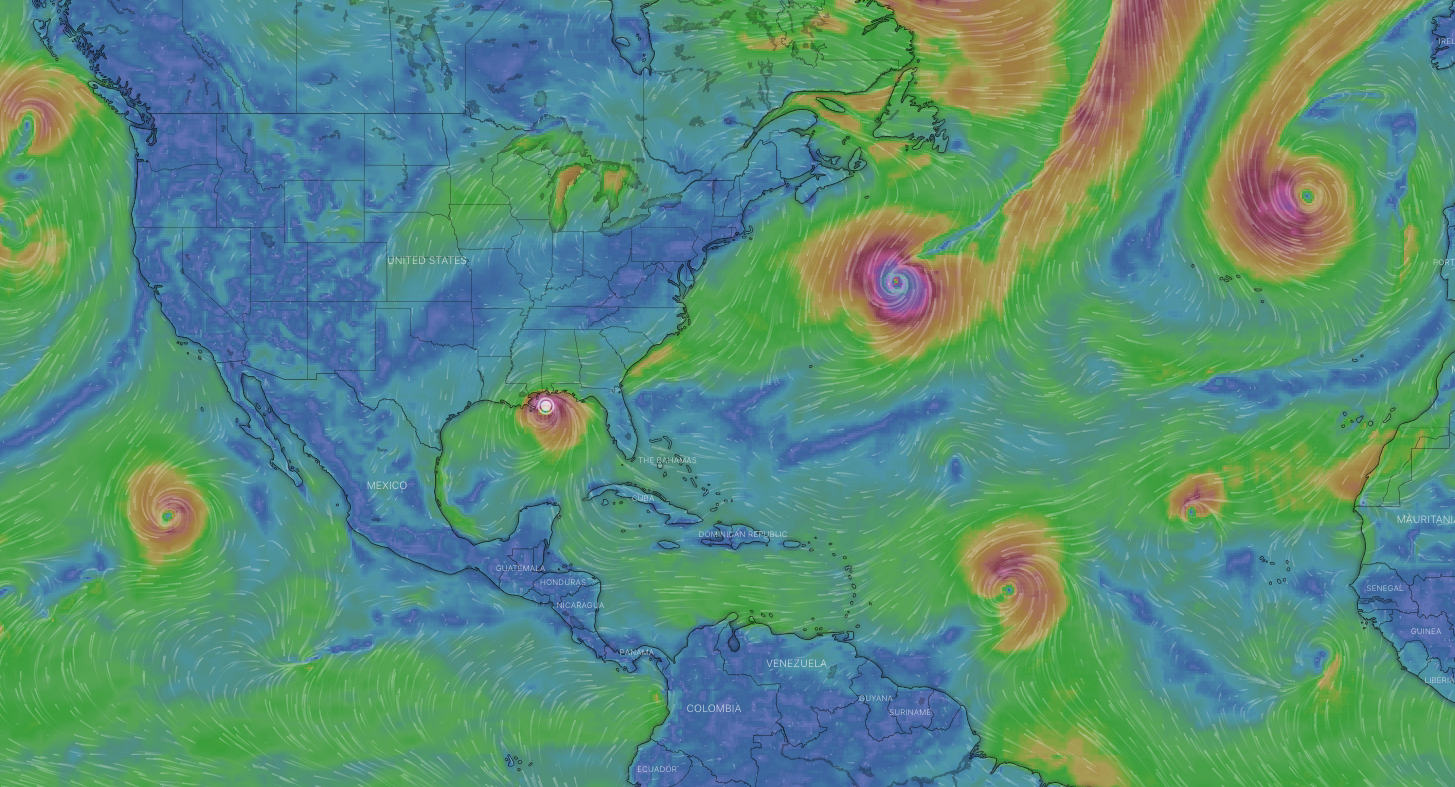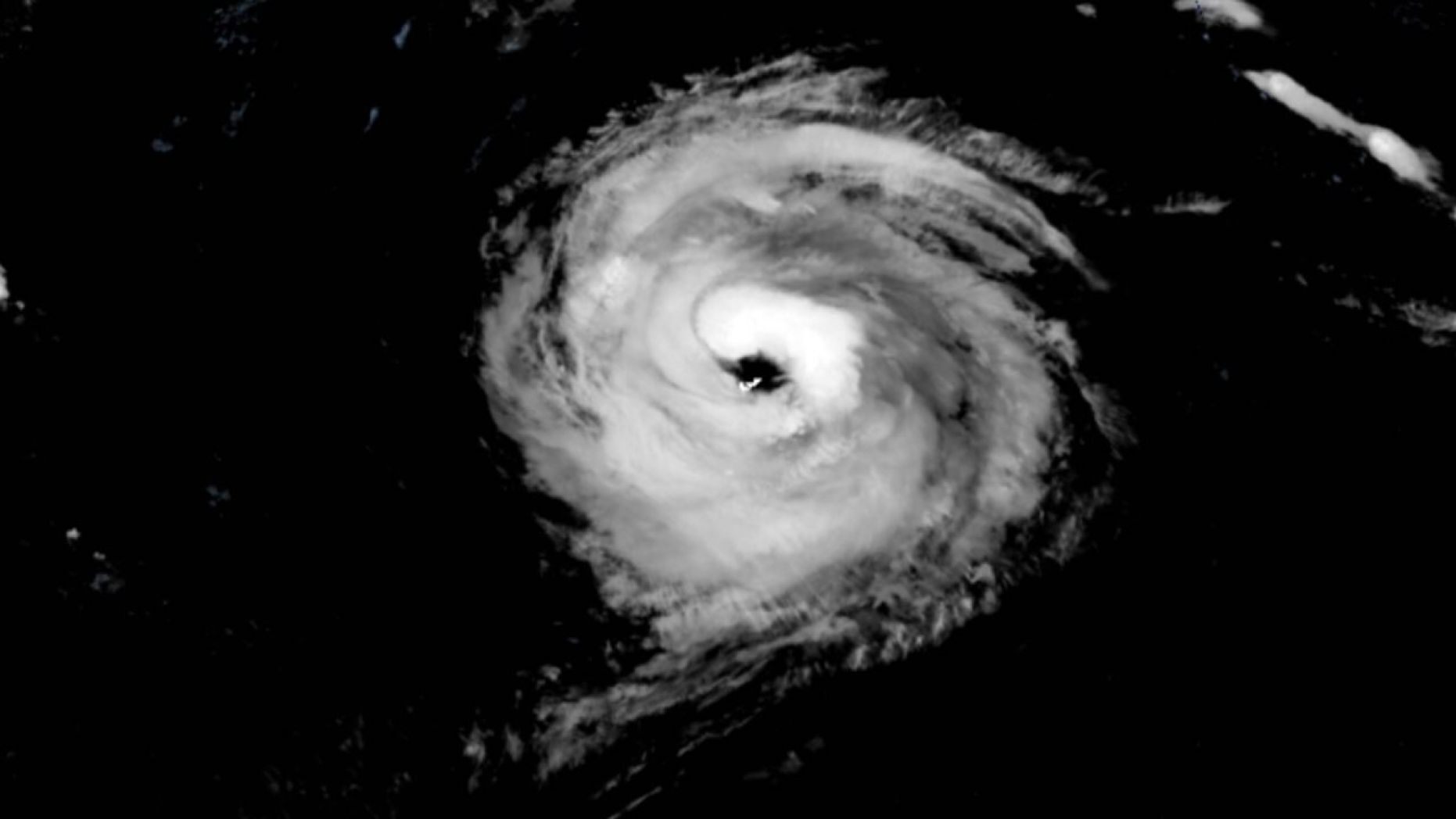
Hurricane Season Lines Them Up
Ever felt like a bowling pin? With fires raging across the West and hurricanes lining up across the Atlantic, it feels like many of us are standing at the wrong end of a bowling lane waiting for the next bowling ball to roll through. The images below from the National Hurricane Center and Windy.com show the story. Hurricane Laura has already thrashed the Southeastern US, Hurricane Sally is currently lashing the Gulf Coast in Mississippi, Alabama and Florida, and Post-TC Paulette has just finished up with Bermuda. Meanwhile, Hurricane Teddy is moving northwest and is expected to strengthen, while Tropical Storm Vicky is powering up farther to the east. Everyone down the lane in Hurricane Alley is wondering if they’re the number one, seven or ten pin.



The middle of September is the peak hurricane period. Given this year’s hurricane forecast it’s no surprise that there’s so much action right now. So far the prime chartering areas have been spared, giving hope for tropical escapes, as long as the pandemic stays in control.

According to the New York Times Vicky is the 20th named storm of this year’s hurricane season and meteorologists only have 21 names on their list before they have to add names from the Greek alphabet. Wilfred will have the honor of being the last name on this year’s prewritten list.
On average, a typical hurricane season, which nominally runs June 1 to November 30, has 12 named storms. Right now we’re just about halfway through. Meteorologists had predicted 19 named storms this year but have now revised that number to 25. They added that they have only exhausted their name list once before — that was in 2005, a season that produced 28 named storms.
Our fingers have been crossed for so many people this year they’re getting cramped. While much of the damage may be inflicted far away, the results may still impact you when your insurance renewal shows up in the mailbox. The peak hurricane season typically settles down by the end of October, after which cruisers generally begin to migrate south to Mexico with the Nada Ha-Ha, or for East Coasters, to the Caribbean.
Most scientists continue to see these unfolding catastrophes as a result of the ongoing effects of climate change. We can help mitigate these disasters by sailing more and motoring less. Either way, we are hoping the very best for everyone in the path of Mother Nature’s current tempests.
